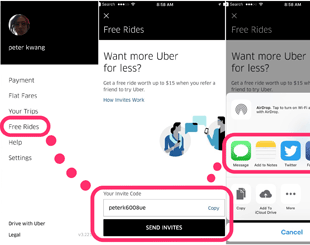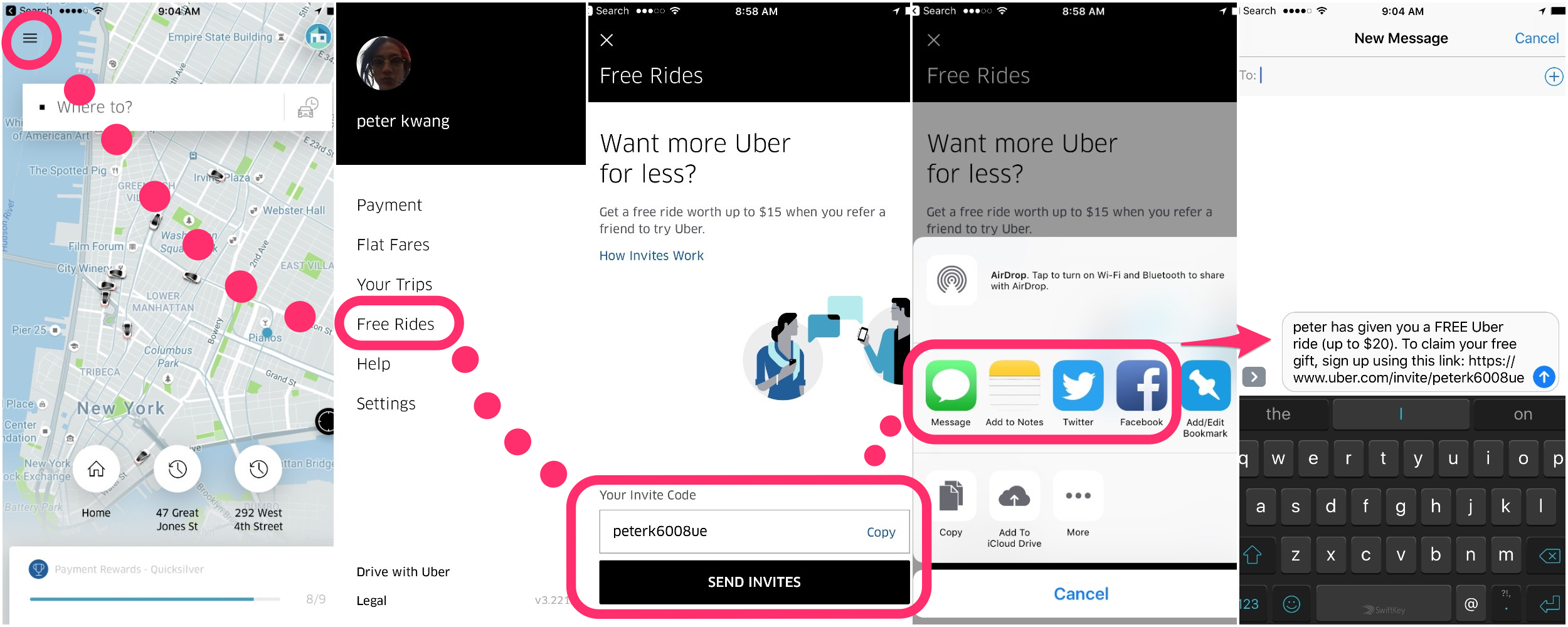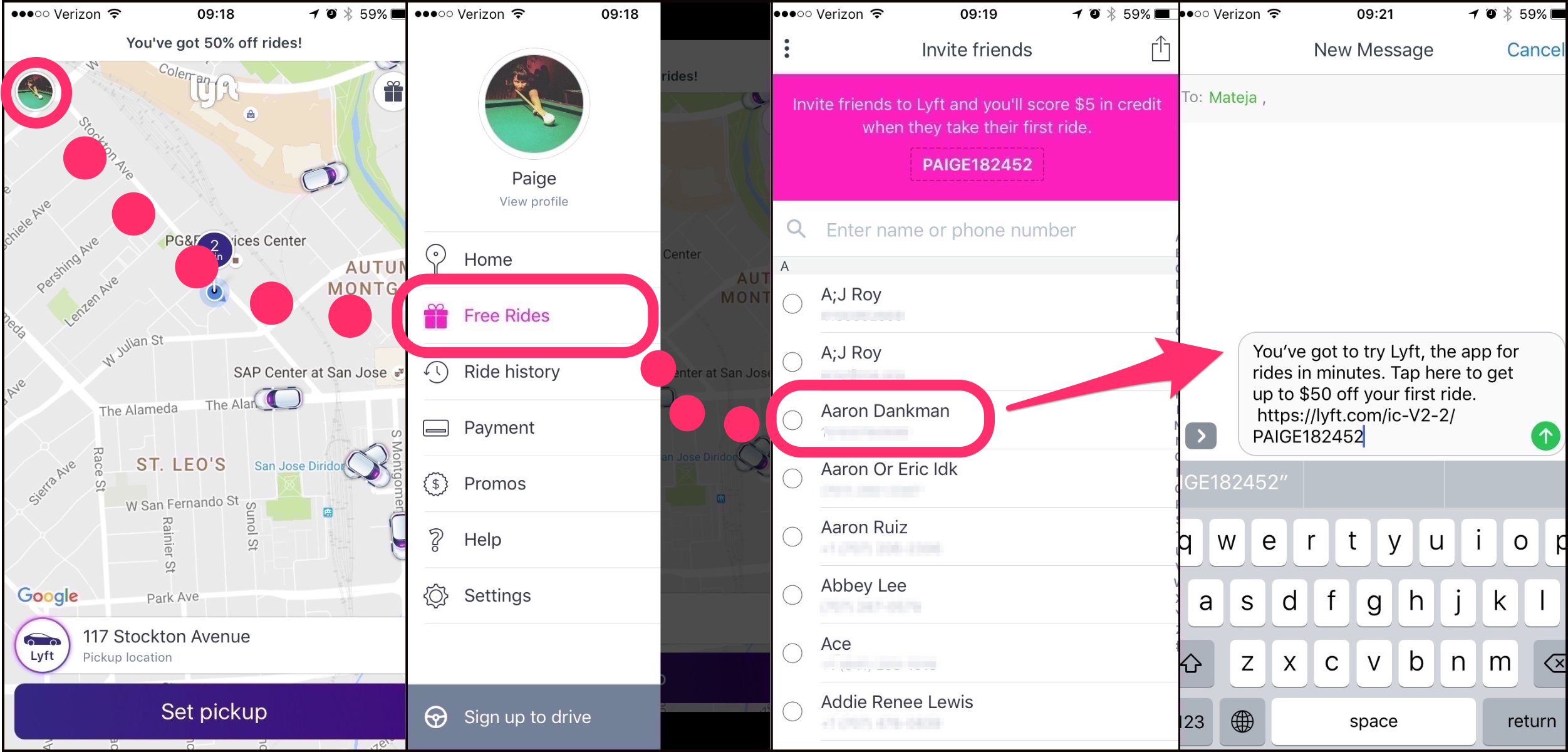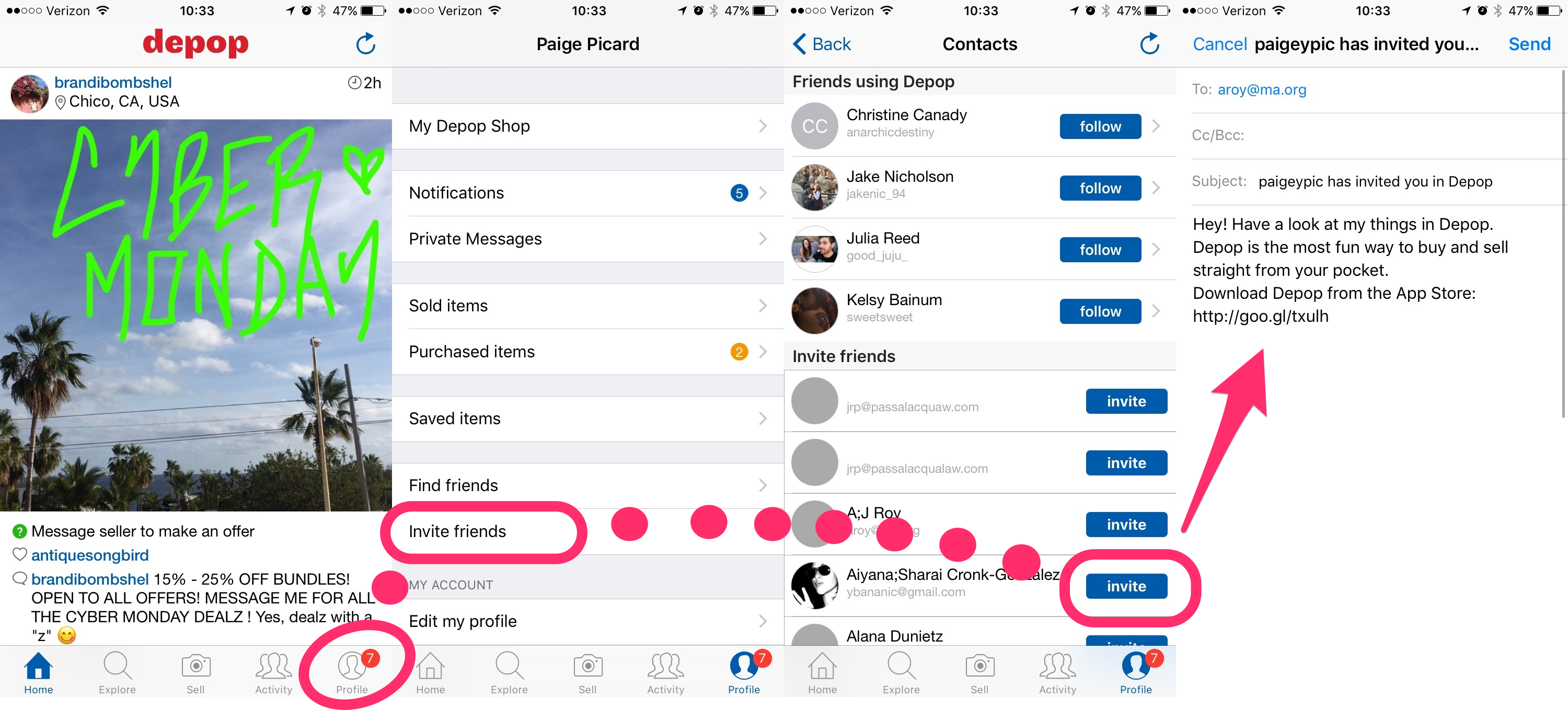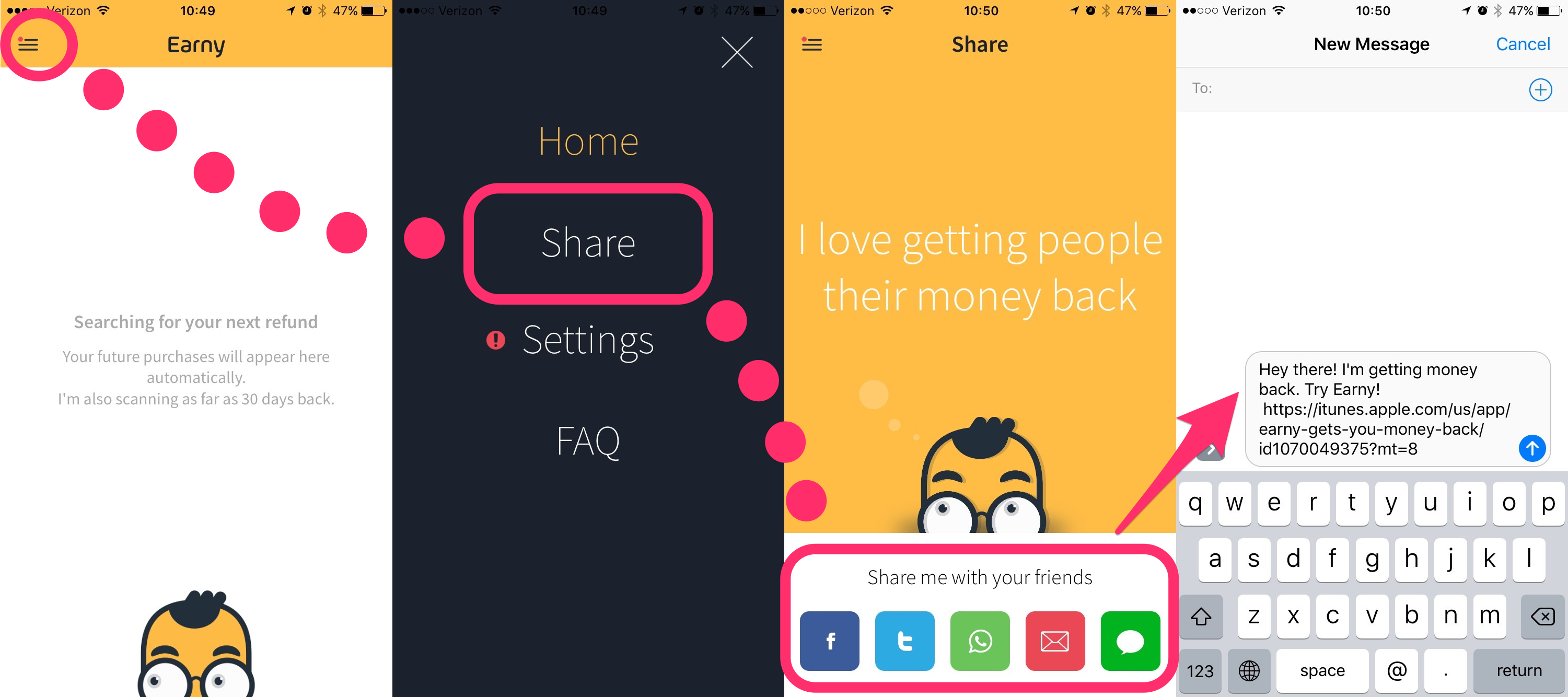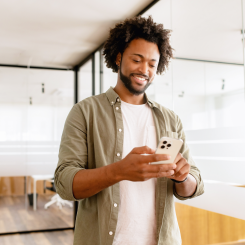By now we’re all familiar with the importance of designing for mobile, but with some features it’s just hard to find the sweet spot between functionality and simplicity.
Mobile referral programs are one such feature.
In a recent research of data we collected from our customers, we found that around 18% of all referrals are initiated from a mobile device. And this number is set to rise with the gradual shift towards higher usage of mobile devices.
If your business runs a referral program, the right time to think about how it works on mobile was yesterday. Here are a few things you can do to improve your mobile referral program:
- Make it easy to find with as few taps on the touchscreen as possible
- Reduce unnecessary friction in the form of mandatory registration, typing email addresses, and the like
- Pre-populate referral messages with sample text, while still allowing users to customize invitations
To help you build a better mobile referral program, we’ve looked at some of the most popular apps, and how they motivate their users to invite friends.
Around 18% of all referrals are initiated from a mobile device. And this number is set to rise…
Uber
Uber, the ride-sharing juggernaut has raised close to $9 billion to date to use on user acquisition. Referral has been a huge driver of Uber’s growth, delivering a 12x return on investment on each new customer. The effectiveness of the program is also one of the factors that has allowed the company to expand to over 450 cities worldwide.
Uber’s referral program is seamless. It takes 4 taps on the screen to invite a friend to join Uber: Tap menu (1) → tap free rides (2) → tap send invites (3) → tap messages (4):
Uber uses native sharing in it’s iOS app, which brings up all the services its customers already use and are familiar with.
This is a great example of a referral program because it is easily accessible from the main menu, so people see it all the time. Moreover, it uses language that demonstrates the main benefit to referrers — “Free rides” rather than “Invite friends” — and compels them to participate.
Lyft
Lyft is a direct competitor to Uber that connects riders to drivers in a taxi-like transportation system. The two companies are locked in a fight for market share, so acquiring new customers is of great importance to both. According to Lyft’s CFO, Brian Roberts, in some months of 2016 over 90% of their passenger marketing spend has gone to new passengers. Referral marketing plays a central role in creating a steady stream of new passengers for Lyft.
Lyft’s referral program is even more seamless compared to Uber because it takes one less tap: tap menu (1) → tap free rides (2) → tap friends to invite (3 or more.)
Lyft has used the custom address book it built inside the app to cut the number of taps it takes to invite a friend to use the app.
Showing the full list of contacts also triggers passengers to share with more people as they can pick friends they initially didn’t think of.
Hotel Tonight
Hotel Tonight allows you to catch last-minute hotel deals for rooms that haven’t been filled in nearby hotels. This is ideal if you have an unexpected overnight layover, or just decide on a whim that you want to check out a new city.
CEO, Sam Shank, defines the “key pillar” of their marketing strategy as providing an incredible experience in order to incentivize customers to share it with their friends.
Hotel Tonight referrals take 2 taps: Tap gift icon (1) → tap message icon (2):
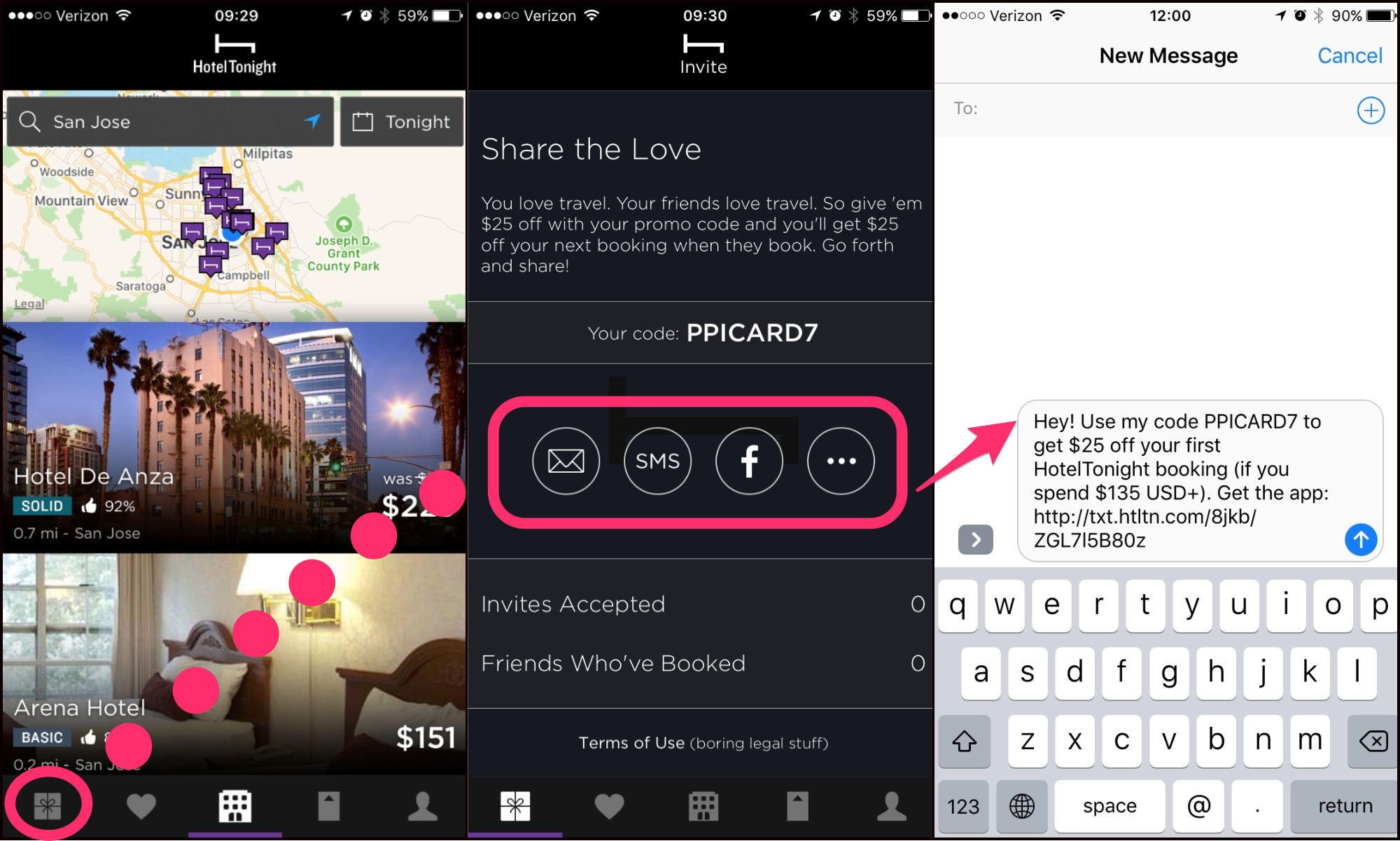
Out of all the apps in this post, this one has the least amount of friction, coming in at 2 total taps. The gift icon at the bottom left-hand corner takes users directly to the sharing options. The two steps it takes is a reflection on their commitment to referral as a key marketing pillar.
Hotel Tonight’s referral program is conceived in a way that even with the dual-sided incentive, they make money on each transaction!
Amazon Prime
Amazon is the #1 most-visited e-commerce site. Amazon Prime grants members special privileges including expedited shipping, unlimited streaming of movies and TV on Prime video, and the ability to borrow Kindle books.
New Amazon Prime users spend double what they normally spend on Amazon in their first year of membership. And since their referral plan only offers $5 per signup, it helps the company add new customers at a very low CAC.
Amazon has a lengthy and somewhat difficult to find in-app referral program. It takes 6 taps to make a referral: Tap menu from home screen (1) → tap ‘Your Account’ (2) → swipe to scroll down (3) → tap ‘Invite Friends’ (4) → tap ‘Share Your Code’ (5)→ tap message icon (6):
Amazon leverages the power of its brand and the large traffic it has to offer a minimal incentive for referring.
But the fact that the program is buried so deep in the app menus, probably results in a low number of users taking advantage of it. If you want to build a strong referral program for your business, one of the first things you need to focus on is getting in front of as many eyeballs as possible.
Musical.ly
Musical.ly is a social media platform that allows anyone to share short music videos. According to the company, the network has around 10 million daily active users and more than 100 million total users worldwide. Referral has played an important role in their growth.
In its strategy for acquiring new users, Musical.ly has taken advantage of the fact that the majority of its users are teenagers and millennials who — in the words of CEO Alex Zhu — are sharing constantly.
Musical.ly’s referral steps, however, are more confusing than they need to be. It takes 5 taps to refer a friend: Tap Profile icon (1) → tap Tools icon (2) → tap Settings (3) → tap Invite Friends (4) → tap Facebook/SMS/email (5):
Finding the “Invite friends” option is neither easy nor intuitive. From the home screen you have to go to the user profile and click a settings button that takes you to another settings button where you can finally invite your friends.
Rather than overwhelming users with numerous choices, Musical.ly has picked three specific channels for referrals — Facebook, SMS, and email.
Depop
Depop is a social network that lets people sell their clothing to others. Once an item is purchased, the seller is responsible for shipping the item. Depop keeps 10% from each item’s selling price, including the cost of shipping.
The app offers a strong value proposition to both sellers and buyers using it. For sellers, it provides an opportunity to make money from anywhere. One woman reportedly made $18,000 of supplemental income in one year using Depop. Buyers, on the other hand, can buy lower-priced brand items, hip/craft brands, and vintage goods.
Depop’s referral steps are relatively easy. It takes 3 taps to make a referral: tap Profile (1) → tap Invite Friends (2) → tap friend to invite (3 or more):
The strong benefit to both sellers and buyers is even highlighted in the pre-populated share message: “Depop is a fun way to buy and sell straight from your pocket.” Having such a strong value proposition means the product is appealing to the point that it doesn’t need to offer a referral reward.
The app makes it easy to invite friends, but the options are limited to email. Adding SMS and messaging apps would make sense for a mobile app.
Earny
Earny is an app that helps you find refunds that you qualify for. It gives money back to you when the prices of past purchases you made drop. Earny acquires users by automating a task — refund search — that most people find so annoying that only 3% undertake.
Like Depop, Earny is free to use because it turns a profit by keeping 25% of each refund. Since most people see the reward Earny provides as free money they wouldn’t have gotten otherwise, the company doesn’t need to provide additional incentives to entice people to share the app with friends.
Earny’s referral steps are very simple. It only takes 3 taps to refer: Tap Menu (1) → tap Share (2) → tap messaging icon (3):
Some of the things worth noting:
The menu page has only 4 options and “Share” is one of them.
They also have 5 different platforms to share through giving users the flexibility to either broadcast on social media or share privately with one or a few people.
Low Friction is the Key to Great Mobile Referral Program
When you make it easy for users to discover your referral program and give them an incentive to become advocates, you make sharing your product a “no-brainer.”
As we see in the examples above, companies achieve this by featuring their referral campaigns prominently within their mobile apps using language that focusses on the benefit to the person making the referral.
A smart referral program can create the basis of a strong “viral loop” that will help you acquire new customers, keep them longer, and turn them into advocates of your brand.
